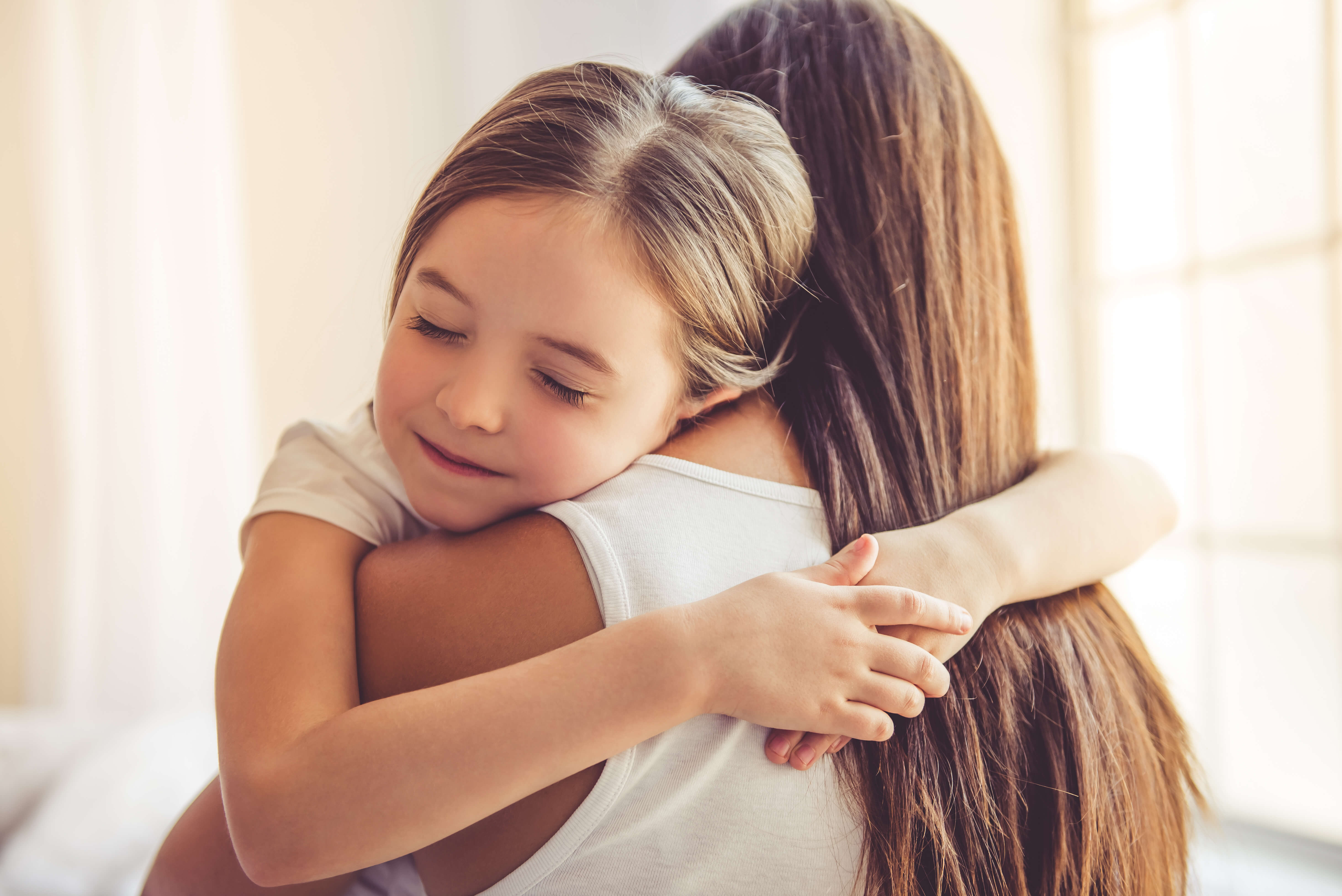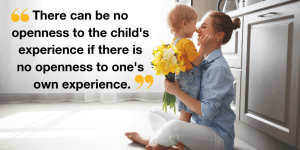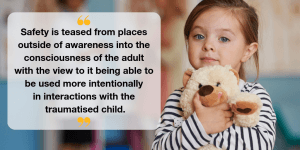
How to invite safety back into the relationships around traumatised children?
This blog post was written by Joe Tucci,
CEO of The Australian Childhood Foundation.
Last week, I wrote about three practice principles that were derived from an exploration of the neuroscience of safety. In this blog, I describe a way of working that centralises safety as the theme for healing the physiological and psychological consequences of abuse and violence for children and young people. It is a sequenced process that weaves safety into the physiological fabric of relationships as regulatory experiences, while creating narratives of “deep safety” in the descriptions given by adults and children to the shared experiences that emerge during the process. Its aim is to merge the relational systems of children and their caring adults to support and nurture safety as embodied resources found in their interpersonal exchanges.
Retrieving the lived experience of safety for adults.
The adults in the networks of traumatised children are parents, grandparents, uncles, aunts, foster carers, residential care workers, teachers, coaches, mentors, child protection workers, therapists. Some of them have experienced the same violence that the children have suffered. All of them have experienced the mobilisation of their bodies through the activation of the sympathetic branch of the autonomic nervous system in response to danger. Some will have had relationships as children and as adults that have helped them to find and experience safety. Safety may be a conscious quality in their lives. Others will have not have experienced safety consciously or unconsciously. Danger may have been a predominant experience of their lived experience. Danger acted to shape their physiology as it was dependent on the presence or absence of a kind and comforting other person.
In order to offer safety, it is our belief that adults need to orient themselves to its feel, its dimensions, its reverberations. There can be no openness to the child’s experience if there is no openness to one’s own experience. They need to find the experiences in themselves and their relationships of moments of shared safety that have given way to a sense of relief, comfort and restoration. These are themes that can be examined directly and indirectly with these adults. Such exploration brings into their awareness the reactions of their bodies, their thoughts and the descriptions they hold about the experience. All of these are important facets of knowing and experiencing safety. As they do this, they are more likely to be able to integrate safety as a

resource into their interactions with the child we are all supporting.
We have developed some questions and practices which explore the theme of safety with the adults in the child’s network. They are presented here as options for working with parents and carers. They can be adapted to suit other adults with different roles or relationships with children.
How does someone find their way to your heart? How do you know you feel safe with someone? What do you sense in your body that tells you that?
How do you find your way to your child’s heart? What does your child know about you that has been safe for him/her?
When you were younger, how and who made you feel protected? What were some of the things they did to help you feel safe? Who looked after you that you knew you would always feel safe with? What was it about them that helped you to know that feeling with such confidence?
When you were not sure about things in your life, who have you always turned to? What is it about the way that this person relates to you that lets you know that you can turn to them?
Whose voice do you hear when you want to feel safe, calm and protected?
When you think about your child, what is it about him/her that you hold in your heart that makes you want to protect them?
What does being comforted feel like for you? What have been sometimes in your life that you remember where someone comforted you in the face of being frightened? How did they do that? What was important in what they said? What was important in the way they interacted with you that gave you the message that you were important enough to them that they would try really hard to help you feel better?
Imagine or bring something with you that you believe is important to your child’s safety to a counselling session. It can be a toy, photo, book as an example. Hold this item and imagine your child holding it or playing with it or being comforted by it. What will your child be feeling the most? What will his/her breathing be like as they hold it and play with it? What will the look in his/her eyes tell you about how he/she are feeling? What will he/she be saying to you about it? What will his/her tone of voice sound like?
What does this experience of deep safety remind you of in your life? How do you know what you know about this kind of deep safety? Who helped you to know it and experience it when you were younger? Who helps you to know and experience safety now? How does safety feel like now for you?
What feels the same about the safety that you feel now and the safety your child feels when they hold this object? What is your tone of voice like now? How do you think I would describe the look in your eyes?
When you clasp your hand to your heart, what can you feel about your child and the closeness you feel with them? If you and your child were holding each other softly, what would it feel like in your heart? What words would you use to help your child know that they are safe?
Trace a story from your life where safety in the face of fear was an experience you really valued. How did it start? What did it mean to you? What do you still carry with you about that experience?
Consider a time when you were able to share the feeling of safety with your child in a way that you knew they felt it deeply. How do you know that he/she shared that feeling and experience with you then? What was it like for you to share this feeling of safety with your child in such an intensive way?
When you hear your child’s voice, what do you hear when he/she is distressed? What do you hear when he/she is feeling connected to you and you to them? What do you hear when he/she is feeling safe with you? What do you hear when he/she is scared or worried?
Are there moments when you feel really close to your child? How is being safe part of that? What do you look for in your child’s expression to tell you that they are feeling safe? What does he/she show you in a spontaneous way that would tell you that he/she is feeling safe and close to you?
If feeling safe was difficult for someone you knew, how would you help them? What would you say to him/her? How would you say it? What would you show him/her in the way you interacted with him/her?
If you knew that feeling safe was difficult for your child, what would you do to help him/her? What would you change about the way you are with him/her? What would you try to do more of? How important is it for you and your child that you share a sense of safety together?
These questions and the ensuing conversations promote reflective engagement with the lived experiences of safety. They are not psychoeducational – instead, they act to empower these vitally important adults to use their experiences of safety as corporeal, metaphorical and as a relational resource for the children for whom safety has been so distressingly violated. It is a form of therapeutic praxis – enlisting the potency of the regulatory parallels between therapist and parent/carer with those embedded in the relational experiences of carer and child. Safety is teased from places outside of awareness into the consciousness of the adult with the view to it being able to be used more intentionally in interactions with the traumatised child.

Tempting safety back into the experiences of traumatised children.
For children who have experienced abuse, the offer of relational safety is the most tender of invitations. It starts softly with the adult paying careful attention to how the child perceives visceral information and feelings from their body. Here, therapist and select important adults in the child’s network spend time noticing how children respond to disruptions in their environment and relationships which might feel distressing, dislocating or perturbing. The intent of this phase is for these adults to attune to the internal neuroceptive activity of the child as he/she subconsciously evaluates external risks and his/her own inner visceral states of safety and danger. We have found the following questions to be central to this orientation.
How does the child react to any changes in his/her routine, environment or relationships?
What have you noticed that seems to trigger any behaviour associated with him/her feeling upset, angry or distressed? How long does it take for the child/young person to calm down after he/she has become distressed or upset about something?
What kind of behaviour does the child engage in when he/she is upset, angry or distressed? Are there patterns in this behaviour?
What does it take to calm down or change the way the child feels when he/she is upset, angry or distressed? How dos the child seek out comfort from others to change the way he/she is feeling? What does the child need from you at those times to assist them to calm and soothe?
When the child is upset, angry or distressed, how does he/she listen to instructions or statements from those around him/her?
Has the way the child reacted to change or any triggers changed over time? Has it become more intense, less intense or stayed the same?
Under what circumstances does the child spontaneously try to involve others in his/her play? What is the most evident behaviour that the child uses to seek out closeness with another? Are there circumstances in which the child shows contingent eye contact with others?
Under what circumstances does the child feel distant from any form of social connection? How does he/she express this withdrawal or distancing experience? What behaviour does he/she engage in that reflects him/her feeling separate to the experience that is being shared?
How does the child communicate internal states related to the perception of danger? What does he/she show in his/her eyes, breathing, tone of voice, head turning? What does he/she say (if anything) that lets you know that danger is being experienced?
How does the child communicate internal states related to the perception and experience of safety? What does he/she show in his/her eyes, breathing, tone of voice, head turning? What does he/she say (if anything) that lets you know that safety is being experienced?
This process of building relational harmony to the child’s internal state is critical. Children experience their own bodies as a site of the danger. They do so because they no longer trust their body. They find it difficult to be able to differentiate the reactions of terror they experience that reverberate in their body from the actual sources of the danger external to them. To these children, they are one and the same.
The internal states of children are softly validated by their important adults using their own social engagement system as a common scaffold towards increasingly mutual experiences of shared regulation. Adults use their tone of voice, their gaze, their regulated slow and rhythmic breathing to tempt the child’s physiology away from mobilised and immobilised states and back to safety.
As this occurs, the traumatised child comes to experience this caring adult as a source of shared intention and volition. In the relational space between adult and child, there is a togetherness through which they come to experience common anticipation of a moment of laughter or joy. They find it in synchronous moments when the adult finishes off the words to a song that the child really enjoys; or, the child finds the perfect spot on the chest of the parent or carer to rest his/her head; or, they hold hands and swing their arms in unison; or, they play basketball and feel the way their hearts pound in response to the demands of the game.
The relational experience at the edge of activation of the child’s fight/flight/flop response (mobilisation and immobilisation with fear systems) is the meeting point where corporeal experiences of danger change to embodied experiences of safety. This shift towards attuned regulated states in both the child and adult offers opportunities for rehearsal and practice of discovering the nuanced experiences of deep safety.
It holds the physiological boundary over which change is sensed and realised. As this occurs, the process is captured with language and expression that makes it more tangible and real. For the child and the adult, the repetition of the movement in neurophysiological activation forms the basis for re-experiencing dimensions of deep safety that can accompany predictability and stability. Children learn to tolerate the boundary of activation so that their physiology can be coaxed back into the safe zone of proximity and relational connectedness.
Children come to feel themselves as being safe through their experience in relationship with a caring and protective adult.
They become more open and less fixed. They use their own social engagement system to approach the adult and seek mutually satisfying interactions. They play and experience curiosity. They test the reliability of the safety being offered. They reach out and begin to hold onto safety for what it offers them. They change. They begin slowly to shed the habitual patterns of activation that have defined by their trauma-based responses to the world. Their heart opens itself to the adult’s affection.
Next week’s final blog will explore activities that can be undertaken with children and carers that merge safety deep into the relational world of adults and children.
The three blogs in this series are derived from a chapter that I wrote with Angela Weller and Janise Mitchell at the Foundation and published recently in an edited compilation of material translating the Steve Porges work on polyvagal theory into practice. The reference for this chapter is as follows:
Tucci, J., Weller, A. and Mitchell, J. (2018). “Deep” safety for children who have experienced abuse: Application of Polyvagal Theory in therapeutic work with traumatised children and young people. In S.W. Porges and D. Dana (Eds.) Clinical Applications of the Polyvagal Theory: The Emergence of Polyvagal-Informed Therapies, (pp. 89-105). New York: W.W. Norton and Company.
